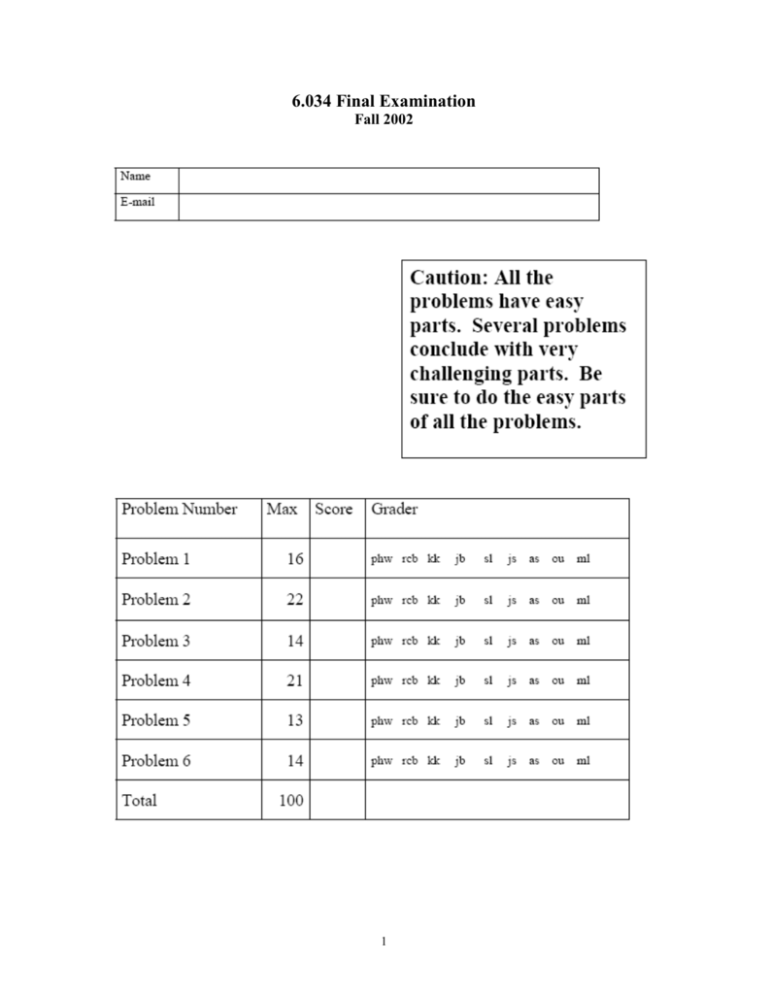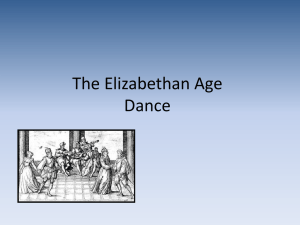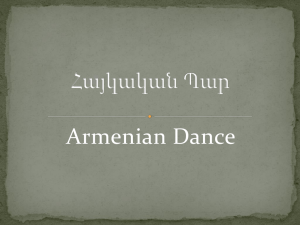6.034 Final Examination Fall 2002 Problem 1: Search (16 Points
advertisement

6.034 Final Examination
Fall 2002
1
Problem 1: Search (16 Points)
• Wallace, a robot, has finished his vacation on the moon and is about to head back to
Earth in his rocket ship (located at position G below). Wallace must hurry to get to
from position S to the rocket ship at position G. He has to navigate via the labeled
landmarks. There is a blinking traffic light at D, which is relevant only to part G of this
problem.
Note that the map is not drawn to scale. All paths are one way, except the path
connecting A to D. Distances between nodes are given by the numbers next to the links.
Heuristics estimates of distance remaining appear next to the node names.
Assume the following for every search method:
• None of the search methods generate paths with loops.
• Whenever a partial path is extended, the method checks to see if the path has already
reached the goal, and if it does, search terminates. No other check is made to see if the
goal has been reached.
Break ties as follows, as usual:
• First, alphabetically, by the head node in the path, the one furthest from the start node.
• Then, front-to-back order in queue.
Part A (2 Points)
Draw the complete, loop-free search tree represented by the graph shown above.
2
Part B (2 Points)
What is the order of node extension if the robot uses depth-first search with backup, but
with neither an enqueued list nor an extended list? What is the path that he will take
using this method?
3
Part C (2 Points)
Now using breadth-first search with an enqueued list, in what order are nodes extended?
What is the path taken?
Part D (2 Points)
Using branch and bound search (no use of an heuristic estimate of distance remaining),
looking for the shortest path, with an extended list, in what order are nodes extended?
What is the path taken? Assume new paths are added to the front of the queue.
Part E (2 Points)
Using A* search (with the heuristic estimates of distance remaining, as given) with an
extended list, looking for the shortest path, in what order are nodes extended? What is
the path taken? Assume new paths are added to the front of the queue.
What is the length of the path found by A*?
Part F (2 Points)
What is the shortest path from S to G?
4
What is its length?
Part G (4 Points)
The robot notices that A* found the fastest path, but not the shortest one. He knows that
the delay at the blinking light is the same time required to travel two units of length.
Perhaps some of the heuristic estimates given on the diagram are inadmissible from the
point of view of path length, but admissible from the point of view of fastest traversal
time.
Circle all of the following which have admissible heuristic distances from the point of
view of path length. Draw an x through the others.
•A
•B
•E
• No node
• All nodes
Circle all of the following which have admissible heuristic distances from the point of
view of traversal time. Draw an x through the others.
•A
•B
•E
• No node
• All nodes
Problem 2: Constraint Propagation (22 Points)
After a semester of 6.034, you are a bit troubled that your perception has been
permanently skewed. Wherever you go, you cannot help but see 6.034 ideas. You
remember a recent example of this was at the MIT Dance Troupe concert, Rhapsody, just
a few weeks ago…
(Flashback) While at the show, you notice that little skits are sometimes needed in
between dances to take up time so dancers can change costumes. Under your breath, you
mutter, “They shouldn’t need to do this – finding an acceptable ordering of dances is just
constraint propagation.” Momentarily horrified, you quickly glance around to make sure
no one heard you. Relieved to see the audience watching the skit, you decide to solve the
ordering problem for a simplified concert -- one act with six dances. You label the slots
for the dances {1, 2, 3, 4, 5, 6} and label the dances themselves {A, B, C, D, E, F}.
Part A: Pure Backtracking (8 points)
“First,” you whisper to yourself, “each dance can only be in one slot.” You realize this is
a binary constraint across all pairs of slots.
5
“Second, the dances in the first and last slots need to be showstoppers.” You realize this
is a unary constraint for slots 1 and 6:
Now, you are ready to find an ordering for the dances. Using the following showstopper
data, do backtracking to find the first set of assignments that is consistent with these
two constraints. (As usual, use alphabetical and numerical ordering to choose the
order for variables and values.) Show your search tree.
For your convenience, all constraints and tables are repeated on a tear off sheet
at the end of the examination.
Search tree:
6
Solution:
Part B: Backtracking with Forward Checking (8 points)
Pleased with your progress, you say, “Third, dances that share dancers should not follow
each other.” You realize this is a binary constraint across all pairs of consecutive dances.
You also know that the following dances share dancers:
Using all three constraints, do backtracking with forward checking to find the first
valid set of assignments. Show your search tree.
7
Search tree:
Solution:
Part C: Optimal Constraint Propagation (6 points)
WARNING: Part C may be long and/or difficult; consider doing other problems
first.
Having accomplished your original goal, you clap out loud with excitement. Luckily, the
rest of the audience is also clapping – for the skit performers. Dr. Koile, a dance
enthusiast, happens to be sitting immediately behind you. Just as the next dance starts,
she leans forward, gestures toward your notes, and whispers, “It is better for dances to
alternate among the various dance genres.” Looking at your show order, you realize it
does not vary at all! How positively … engineered!
At that moment, your TA swaggers out on stage; you resolve to incorporate aesthetics
into your calculations and find an optimal show order. “If only I had a heuristic for the
goodness of genre transitions,” you murmur. Dr. Koile hands you the following data:
The penalties genre transitions:
8
Genres of the dances:
Dr. Koile also says that Justin is in dance A. This means dance A has to
be first.
Using the data from these new tables, the fact that dance A has to be first, and the
constraints from before, find the optimal ordering of dances (minimum total
penalty). Show your search tree on the following page.
Hint: Consider using a different search algorithm than depth-first.
Please draw your search tree for Part C here. (The details of the previous parts of
the problem are repeated on a tear-off sheet at the back of the exam.)
Search tree:
9
Solution:
Problem 3: Classification (14 Points)
Part A: Nearest Neighbors (6 Points)
The 6.034 staff has decided to launch a search for the newest AI superstar by hosting a
television show that will make one aspiring student an MIT Idol. The staff has judged
two criteria important in choosing successful candidates: work ethic (W) and raw talent
(R). The staff will classify candidates into either potential superstar (black dot) or normal
student (open circle) using a nearest-neighbors classifier.
On the graph below, draw the decision boundaries that a 1-nearest-neighbor
classifier would find in the R-W plane.
Part B: Identification Trees (4 Points)
Part B1 (2 Points)
Now, leaving nearest neighbors behind, you decide to try an identification-tree approach.
10
In the space below, you have two possible initial tests for the data. Calculate the average
disorder for each test. Your answer may contain log2 expressions, but no variables. The
graph is repeated below.
Test A: R > 5:
Test B: W > 6:
Part B2 (2 Points)
Now, indicate which of the two tests is chosen first by
the greedy algorithm for building identification trees.
We include a copy of the graph below for your scratch work.
Part C: Identification Trees (4 Points)
Now, assume R > 5 is the first test selected by the identification-tree builder (which may
or may not be correct). Then, draw in all the rest of the decision boundaries that would be
placed (correctly) by the identification-tree builder:
11
Problem 4: Neural Networks (21 Points)
Part A: Perceptrons (11 Points)
Part A1 (3 Points)
For each of the following data sets, draw the minimum number of decision boundaries
that would completely classify the data using a perceptron network.
Part A2 (3 Points)
Recall that the output of a perceptron is 0 or 1. For each of the three following data sets,
select the perceptron network with the fewest nodes that will separate the classes, and
write the corresponding letter in the box. You can use the same network more than
once.
12
Part A3 (5 Points)
Fill in the missing weights for each of the nodes in the perceptron network on the
next page.
Make the following assumptions:
• Perceptrons output 0 or 1
• A, B, C are classes
• The lines labeled α (same as abscissa, the x1 axis), β, γ represent decision boundaries
• The directions of the arrows shown on the graph represent the side of each boundary
that causes a perceptron to output 1.
13
Part B: Negative sigmoids (10 Points)
The following sigmoid network has 3 units labeled 1, 2, and 3. All units are negative
sigmoid units, meaning that their output is computed using the equation n(z) = -1/1+e-z,
which differs from the standard sigmoid by a minus sign. The equation for the derivative
of n(z) is. dn(z) = n(z)(1+n(z)). Additionally, this network uses a non-standard error
function E = 1/2(2y* - 2y)2.
14
Part B1: Forward propagation (4 Points)
Using the initial weights provided below, and the input vector [x1, x2] = [2, 0.5],
compute the output at each neuron after forward propagation. Use the negative sigmoid
values given in the table on the tear-off sheet at the end of the exam in your computation.
Part B2: Backward propagation (6 Points)
Using a learning rate of 1, and a desired output of 0, backpropagate the network by
computing the δ values for nodes 2 and 3, and write the new values for the selected
weights in the table below. Assume the initial values for the weights are as specified in
Part B1, and assume the following values for the neuron outputs:
output at node 1, y1 = -1.0
output at node 2, y2 = -1.0
output at node 3, y3 = -0.2
Note: some helpful formulas appear on the tear-off sheet at the end of the
examination.
15
Express δ2 and δ3 in terms of derivative-free expressions.
Express the weights in terms of δ s and numbers.
Problem 5: Near-Miss (13 Points)
Part A: Mistaken Identity (9 Points)
Ben Bitdiddle, enterprising AI engineer, decides that the next hot product will be a
system that summarizes soap operas, so that people don't have to spend time watching
them to know what happens. As part of the system, he finds that he needs to recognize
concepts based on relationships between people, and decides that the right way to do this
is with a near-miss learning system.
Ben decides to learn about the sort of comedy that ensues when somebody mistakes one
identical twin for another. He starts by studying the relationships between people in soap
operas and determines that people tend to fall into a few predictable categories. He builds
the following hierarchy to describe people and their occupations:
Ben then feeds the near-miss learning system six mistaken identity samples—which we
have already translated for you from English into networks—in alphabetical order. These
samples are shown on the next page.
16
Part A1 (6 Points)
For each of the six samples above, draw the model Ben's system constructs from the data
given thus far.
Part A2 (3 Points)
Now indicate for each of the six samples, whether the system is specializing (S),
generalizing (G), both (B), or neither (N).
17
Part B: Embezzlement (4 Points)
Pleased with his success, Ben decides to train the system for another model. Now he
wants the system to recognize when embezzlement occurs. After a while, his model looks
like this:
Part B1 (2 Points)
Noting that small amounts of money are often transferred to employees in repayment of
entertainment expenses, which of the following three models should Ben choose for the
next sample?
18
Part B2 (2 Points)
Draw the new model resulting from your choice.
Problem 6: Support Vector Machines (14 Points)
Part A: (2 Points)
The following diagrams represent graphs of support vector machines trained to separate
pluses (+) from minuses (-) for the same data set. The origin is at the lower left corner in
all diagrams. Which represents the best classifier for the training data? See the separate
color sheet for a clearer view of these diagrams.
Indicate your choice here:
19
Part B: (5 Points)
Match the diagrams in Part 1 with the following kernels:
Radial basis function, sigma .08
Radial basis function, sigma .5
Radial basis function, sigma 2.0
Linear
Second order polynomial
Part C: (3 Points)
Order the following diagrams from smallest support vector weights to largest support
vector weights, assuming all diagrams are produced by the same mechanism using a
linear kernel (that is, there is no transformation from the dot-product space).
The origin is at the lower left corner in all diagrams. Support vector weights are also
referred to as αi values or LaGrangian multipliers. See the separate color sheet for a
20
clearer view of these diagrams.
Part D (4 Points)
Suppose a support vector machine for separating pluses from minuses finds a plus
support vector at the point x1= (1, 0), a minus support vector at x2= (0, 1).
You are to determine values for the classification vector w and the threshold value b.
Your expression for w may contain x1 and x2 because those are vectors with known
components, but you are not to include any αi or yi. Hint: think about the values produced
by the decision rule for the support vectors, x1 and x2.
21
TEAR OFF PAGE FOR CONSTRAINT PROPAGATION
Constraints:
Data figures:
Dances that share dancers:
Genre to genre transition penalies:
Genres of the dances:
Showstopper data:
22
TEAR OFF PAGE FOR BACKPROPAGATION
Negative Sigmoid Values
An efficient method of implementing gradient descent for neural networks.
The formulas below assume a regular sigmoid unit, s(z) = -1/1+e-z, and an error function
of E = 1/2Σ(y* - y)2.
Descent Rule
Backprop rule
1. Initialize weights to small random values
2. Choose a random sample input feature vector
3. Compute total input (zj) and output (yj) for each unit (forward prop)
4. Compute δn for output layer
5. Compute δj for preceding layer by backprop rule (repeat for all layers)
6. Compute weight change by descent rule (repeat for all weights)
23







